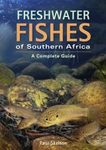About this book
The order of Catfishes (Siluriformes) is one of the largest in number of families, genera, and species. The group is found in most freshwater and shallow saltwater bodies around the world. Its extraordinary evolutionary and biogeographic pathways leave many open questions on its origin and large diversification that make its study a complex subject, yet a fascinating field for research. Catfishes, a Highly Diversified Group is divided in two volumes. Volume 1 (Their Outstanding Biology; 14 chapters) aims to rectify the incomplete information on the enormous morphological diversity of the group, special habits and adaptations to specific environments, and morpho-functional characteristics of the catfishes. Volume 2 (Evolution and Phylogeny; 18 chapters) deals with evolutionary mechanisms and major evolutionary trends within Siluriformes, investigating new avenues concerning fossil and extant catfishes and relationships within and among families, using morphological and molecular evidence.
Contents
Foreword
Topics and Contributors
Acknowledgements
Introduction
- An Introduction to Catfishes: A Tale of Evolutionary Success / Gloria Arratia and Roberto E. Reis
Anatomy of Catfishes
- An Overview of Some of the Main Features of the External Anatomy of Catfishes / Pedro P. Rizzato and Malu A. Almeida
- An Overview of the Anatomy of Catfishes and its Diversity / Timo Moritz
- Siluriform Weberian Apparatus: Modularity and Integration / Kevin K. Duclos and Terry C. Grande
- Diversity and Evolution of the Pelvic Girdle and Fin in Catfishes / Timo Moritz, Ann-Katrin Koch and Philipp Thieme
- The Caudal Fin Musculature of Catfishes and the Homology of the Posterior Myomeres / Nicolás Cumplido
- Siluriform Venom Systems / Jacob Egge
- X-Ray Computed Tomography and the Study of Catfish Morphology / Mariangeles Arce H. and Adam P. Summers
Biology of Catfishes
- Miniature Catfishes: Diversity, Ecology and Evolution / Elisabeth Henschel, Axel M. Katz and Pedro H. N. Bragança
- Parasitic Catfishes / Carlos DoNascimiento and Mário de Pinna
- Whiskers Ahead – Catfish Migrations in Freshwater and Marine Environments / Jansen Zuanon and Gislene Torrente-Vilara
- Diversity and Life Cycles of Subterranean Catfishes / Eleonora Trajano and Sandro Secutti
- Sound Production and Communication in Catfishes / Ingrid M. Kaatz, Phillip S. Lobel and Aaron N. Rice
- Insights Into Catfish Respiratory Mechanisms / Giacomo Zaccone, José Manuel Icardo and Alessio Alesci
Index
Customer Reviews
Biography
Gloria Arratia is a leading scientist on the origin, diversification and systematics of the largest fish group, Teleostei. She retired from Humboldt University, Berlin and is currently associated with the University of Kansas. She has been awarded numerous professional prizes, with the first in 1994 (Humboldt Prize; Alexander von Humboldt Foundation) and the last in 2022 (Joseph S. Nelson Lifetime Achievement Award in Ichthyology; American Society of Ichthyologists and Herpetologists). A book, Origin and Phylogenetic Interrelationships of Teleosts: Honoring Gloria Arratia by J. S. Nelson, H.-P. Schultze and M. V. H. Wilson (eds.), was published in 2010. She is the editor of the Mesozoic Fishes books series and Associate Editor of several journals. She is the editor of nine books, including Catfishes (2003), and the author of many publications concerning high-level teleostean ranks, 13 new families, 51 new genera, and 69 new species. She is a member of the Academia of Sciences of Chile.
Roberto E. Reis is a Full Professor at the Pontifical Catholic University of Rio Grande do Sul, Brazil and a leading scientist in South American ichthyology. He is the Regional Chair of the Freshwater Fish Specialist Group of IUCN for South America and a founding member and twice Past-President of the Brazilian Society of Ichthyology. He is Associate Editor of Ichthyology & Herpetology and of other journals and he has edited three other highly cited books. Dr Reis has extensive experience in the area of ichthyology, mainly in the discovery, documentation and description of biodiversity and the study of phylogenetic relationships using phenotypic and molecular evidence. He has discovered and described with coauthors and students 12 new genera and 141 new species of fishes. In 2021 he received the Robert H. Gibbs Award for the outstanding body of published work in systematic ichthyology from the American Society of Ichthyologists and Herpetologists.


































